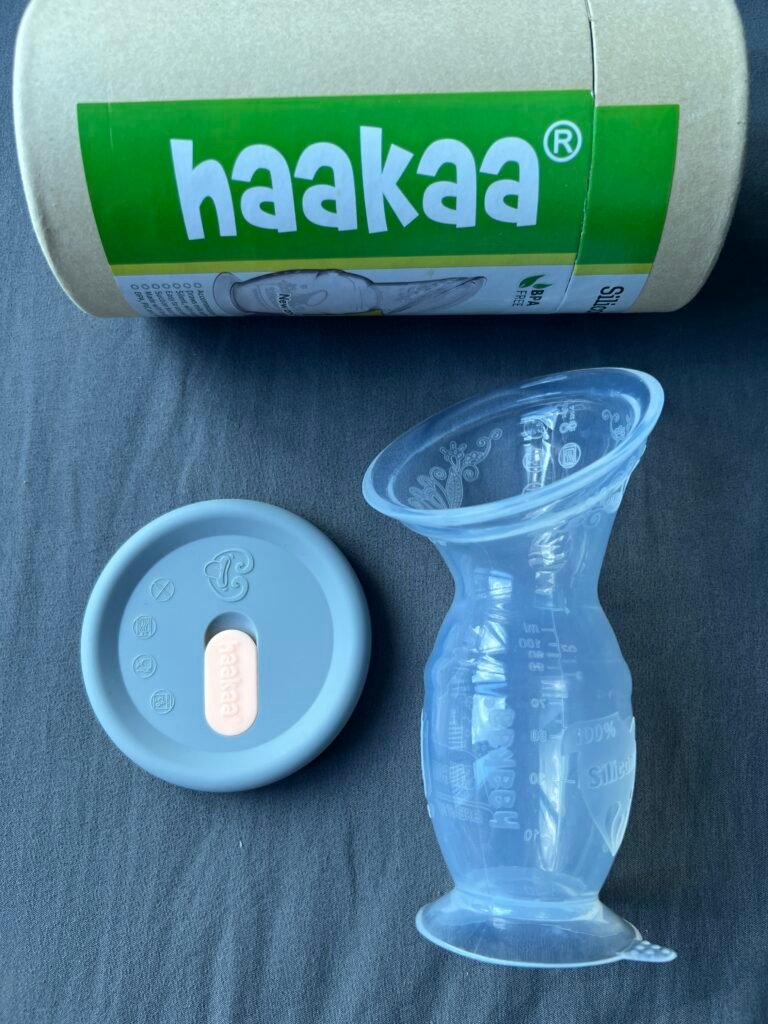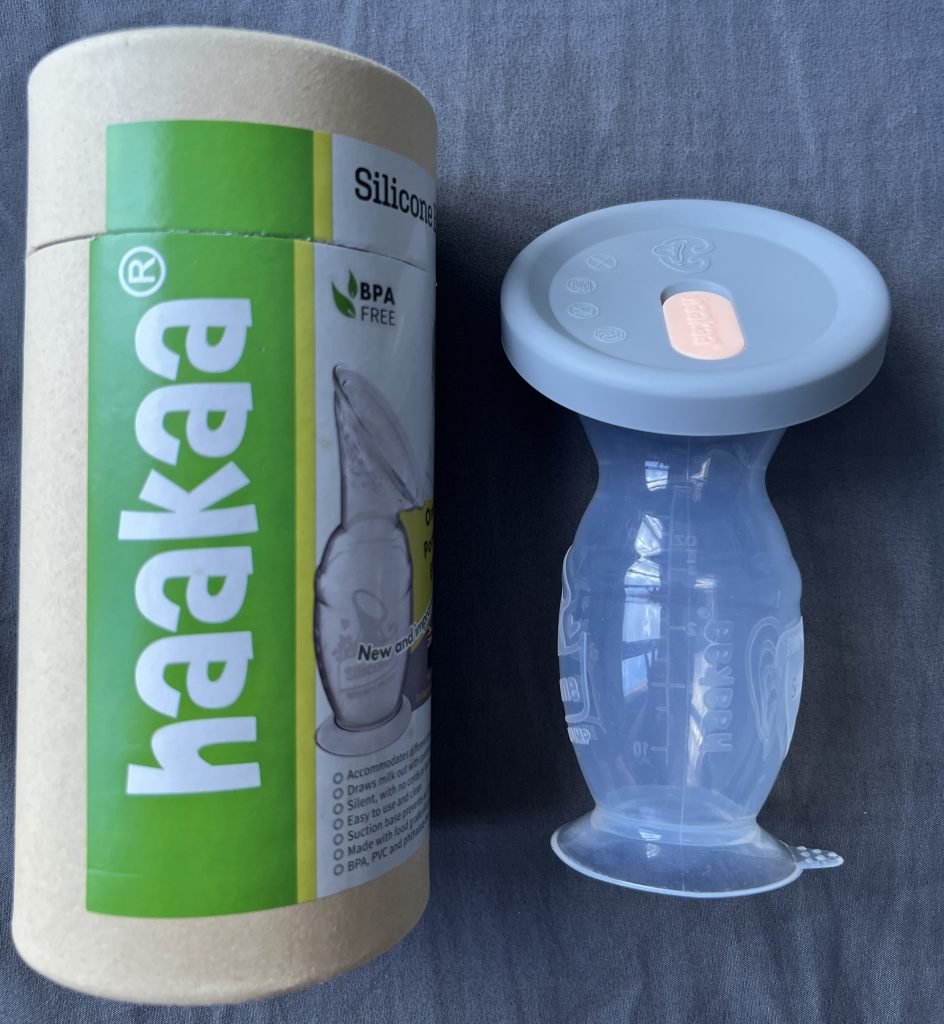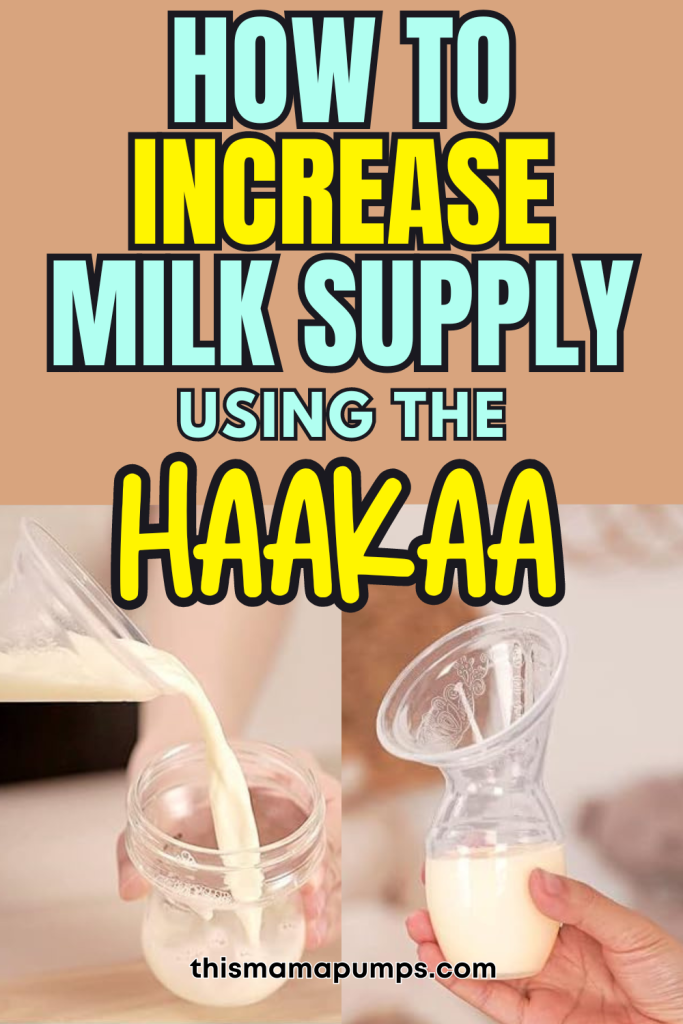There’s a hidden truth about the Haakaa that most breastfeeding moms don’t know.
I first got wind of the Haakaa when the pediatrician told me to use a “silicone breast pump”. Baby couldn’t latch and I started getting engorged three days after I gave birth.
In Facebook groups, moms swear by the Haakaa as a breastfeeding must-have. So when I went to the local mom and baby supply store and got the Haakaa.

Little did I know the Haakaa wasn’t really a “breast pump”.
It’s more of a “milk collector” that passively suctions the milk. Great for collecting letdowns but not so great for initiating milk supply when your baby won’t latch.
I needed a proper electric breast pump!
That said, my SIL who is nursing her baby found the Haakaa super helpful. She even donated the milk she collected from her Haakaa letdowns to my baby!
So if the Haakaa is passive, then why do you see lactation professionals warning about Haakaa oversupply?
But before we get to that..
What is the Haakaa?

First, what really is the Haakaa?
I know it advertises itself as a silicone breast pump. [1]
But, in reality, it’s more of a milk catcher that has a flange opening like breast pumps do.
You attach the flange to your breast and it will (at least, in theory) passively suction the milk out.
How are they different?
- Electric breast pumps actively suctions your milk using the pump’s preset settings [2]
- Manual breast pumps relies on your hand movements to create an active suction
- Haakaa silicone breast pump attaches to your breast to passively collect milk letdowns
So if it’s really “passive”, why and how can it possibly cause an oversupply?
*Take note that the Haakaa I’m referring here is the OG Haakaa, not the LadyBug milk collector (which is a breast shell for collecting letdowns).
The Haakaa is NOT just for letdowns
While it’s great for letdowns, it doesn’t just collect letdowns. [3]
The suction, no matter how gentle, still stimulates the nipples.
If you leave it attached on your breast, it can still draw milk out. Much more than what you usually get from a letdown.

Does the Haakaa cause oversupply?
You’ve probably seen those warnings.
Lactation consultants warn breastfeeding moms that the Haakaa can cause an oversupply. [4,5]
But why? And how?
This is because the Haakaa still has a suction. Although passive and gentle, it’s still continuous suction.[6]
As long as you use the Haakaa, it will continue drawing milk out.
Since milk production is dependent on supply and demand, the more milk is removed (even if using Haakaa), the more milk your body will produce.
If left for long periods, the Haakaa can even damage delicate breast tissue.
The good thing is, you can adjust the suction to comfortable levels. And if it starts to feel like its hurting, just take it off and reattach it using gentler suction.
This can be tricky though, as you need the suction for the Haakaa to stay on your breast without falling off.
In fact, one of the common complaints of moms is that their babies tend to kick off the Haakaa, spilling precious breastmilk. It usually happens with older babies.
How to use Haakaa pump to increase milk supply

Let me preface this by saying an oversupply comes with a higher risk of clogged ducts and mastitis.
Now that you’re aware of the risks, let’s proceed.
1. If you’re pumping, you can use the Haakaa on the other side.
In my early days, that’s what I did since I get more milk if I single-pump instead of double-pumping. (I was gifted a portable rechargeable electric pump and the suction wasn’t great if I double pump.)
Sometimes, I’d use my Medela hand pump and the Haakaa on the other boob.
2. If you’re nursing, use the Haakaa on the other boob while feeding your baby.
You can use the Haakaa to collect the foremilk leaving the hindmilk behind for your baby once she switches to feed on the other boob.
That way, your Haakaa won’t be “taking milk away from the baby”.
But if your baby only nurses on one side, use the Haakaa on the other boob for the entire nursing session.
3. If you exclusively pump, use the Haakaa for the middle of the night (MOTN) pumps.
Sometimes, it can be really hard to wake up at night just to pump.
Setting the pump with all the wires and parts, putting it on and then cleaning up after. It’s such a laborious task!
It’s no wonder we’d just want to sleep instead of pump, especially if your baby is sleeping through the night.
A good compromise is using the Haakaa to passively collect milk. But this assumes that you respond well to the Haakaa. And that you can actually get milk.
Some women just don’t respond to the Haakaa for some reason.
It’s the same with most breast pumps. You gotta find the right one that works for you!
Alternatives to the Haakaa
If you want to avoid an oversupply or just want a more passive milk collector, then I recommend using a milk catcher.
There are breast shells you can attach to the boob to collect letdowns without the suction that the Haakaa has. You can usually wear them under a shirt, much like you do with wearable breast pumps like the Elvie and Willow.
Looking to increase milk supply through pumping? Then you’ll need a much stronger pump.
You can use a wall pump, a hand pump or a wearable.
These “traditional” pumps are much better at removing milk compared to silicone milk collectors like the Haakaa.
Same goes for Haakaa knock-offs and other Haakaa-style milk collectors (the ones with a flange). I know Medela sells something similar too.
To Sum Up
Yes, the Haakaa can indeed increase breast milk supply for those who respond well to it. (Not all women do.)
It can even potentially cause an oversupply.
That said, there are alternatives if you don’t want an oversupply. And alternatives if you need a stronger pump.
And if you’re looking to increase your milk supply through pumping (or you’ve got a TRUE low milk supply), then you need a better pump.
What About You?
Do you own a Haakaa? Did it work for you?
Let me know in the comments. I’d love to hear from you!
References:
- Robertson, B. D. (2020). New Kid on the Block: The Haakaa Style Silicone Breast Pump. Clinical Lactation. http://dx.doi.org/10.1891/CLINLACT-D-20-00004
- Meier, P. P., Patel, A. L., Hoban, R., & Engstrom, J. L. (2016). Which breast pump for which mother: an evidence-based approach to individualizing breast pump technology. Journal of perinatology : official journal of the California Perinatal Association, 36(7), 493–499. https://doi.org/10.1038/jp.2016.14
- Banks, S. (August 2016). Briefing Papers: One-piece Silicone Breastpumps.Local Infant Feeding Information Board UK. https://lifib.org.uk/one-piece-silicone-breastpumps/
- Sargeant, J. (2020, July 21). How NOT to use a Haakaa. Milk and Motherhood. https://milkandmotherhood.com/2020/07/how-not-to-use-a-haakaa.html
- Scholz, M. (2021, November 3). Can Haakaa cause oversupply?. Kindest Cup. https://kindestcup.com/blogs/news/can-haakaa-cause-oversupply
- Howell, L. (2023, April 13). Overactive letdown and oversupply. Woven Lactation. https://www.wovenlactation.com/blog/overactive-letdown-and-oversupply/

